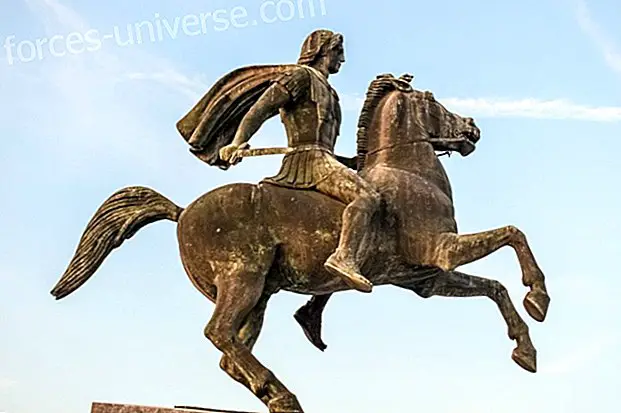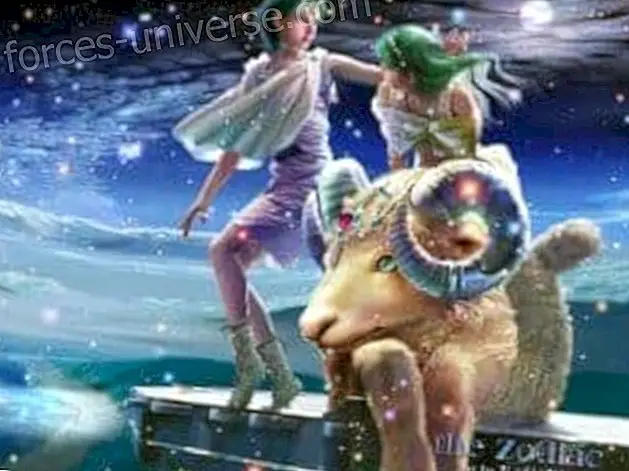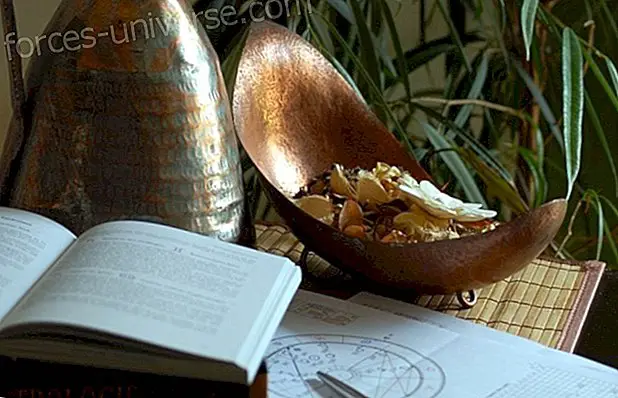A COURSE OF MAGIC. Unit 1: The Mind. Learning Object 1. The magician's learning
The sorcerer did not know what forces were revealed or manifested, when he practiced some rites and pronounced some magic formulas, but he used them with respect, humility and caution. The sorcerer was subjected to very strong initiation rituals, some of which could be deadly, so being victorious was already a magical experience. Today engineering is based on matter and energy as well as physical and chemical processes, discovered by established researchers. True biologists are the only ones initiated into mysteries because they have an understanding of life and its purpose.
OBJECTIVES
- Recognize the assumptions on which the course is based.
- Establish relationships between the disciple and the Master through meditation.
- Delineate the path of discipleship in its various phases.
RULE ONE
The Solar Angel gathers itself, does not dissipate its strength, but in deep meditation communicates with its reflection.
INTRODUCTORY ACTIVITY

Lucy is a woman forced to act as a “mule” for a Korean mafia, trying to introduce a powerful designer drug in kilo bags, which when bursting inside her body causes both physical abilities as psychics. Lucy is a French action and science fiction movie of 2014 directed and written by Luc Besson.
Watch the movie Lucy, trying to capture the difference between the physical and the psychic, as well as answering the research question What is capable of Do the human being when he uses 100% of his brain? Help yourself with the following progress chart.
10% | twenty% | 30% | 40% | fifty% | 60% | 70% | 80% | 90% | 100% |
Try to establish differences between the brain, the mind and the soul, completing the table from the following computer analogy.
BRAIN | MIND | SOUL |
| Run the program | Design the program | You are the programmer |
ACTIVITY ONE: The assumptions

The philosophers of the universe postulate the existence of the eternity of I AM as the primary source of all reality. The I Am is Unique, Triumphant and Sevenfold.
The self is the self-construction of the person in self-awareness. In English, the difference between the “I” (the subject) and the “self” (the object) is emphasized. When the self is known and not simply felt, and when the understanding is both mental and sensory, then the aspirant can be truly prepared for learning.
Only the person who is aware of himself has all the attributes and creative power of the I Am. I would like to point out that the course is based on certain fundamental assumptions, which I will mention briefly for clarity.
First, that when the student is sincere in his aspiration he is willing to move forward, no matter what the reaction of the lower self, or about it. Only those who clearly distinguish the two aspects of their nature, the real me and the illusory self, can work intelligently.
Let's look at the differences between the two Yoes:
I REAL | I ILLUSION |
Alma is a masculine word, which represents the positive pole, the proactive. The divine personality manifests itself in three people that imply identity, self-consciousness, self-will and the possibility of revelation. The inner self is shaped by the way we are treated since childhood, by the way teachers have encouraged or criticized us. | Personality is a feminine word, which represents the negative pole, the reactive. The human soul is a physical tabernacle, it is a duality conformed by the moral mind in collaboration with the divine spirit. Every human experience is a subjective reality. The outer self is that set of masks, facets of ourselves that we all have and act in the form of subpersonalities. |
Second, I act assuming that everyone has lived and fought sufficiently against the adverse forces of life, to allow them to develop a fairly real sense of values. I presume they try to live like those who know something of the true eternal values of the soul. That no personality event will stop them, nor the pressure of time and circumstances, age or physical disability.
Let's see what those eternal values are:
BEAUTY | TRUE | GOODNESS |
It is largely a matter of unifying contrasts. | It is the basis of science and philosophy and offers the intellectual foundation of religion. | Understand the sense of ethics, morality and religion. Hunger for perfection. |
Third, I believe that those who earnestly expect to benefit from the instructions of this course will be prepared to meet these simple requirements: read it reflectively, try to organize the mind and devote themselves to the study of meditation.
Let's extend those three requirements:
REFLECTIVE READING | ORGANIZED MIND | REGULAR MEDITATION |
Interpret the underlying ideas in the specific symbols. A lesson is a commented reading, it can also be defined as writing or speech made to teach or instruct. | Mental processes are what allow us to design learning strategies in an effective use of intelligence. It is intelligence that correlates the artificial with the spiritual. | Through concentrated meditation, mental images in other people's minds are manifested to us. We understand the thoughts that put substantial forces into action. |
- Argue what motivates you to gain knowledge about magic and the reason why a guide to a lesson is preferable.
ACTIVITY TWO: The Magic Master

We have already seen how the line of demarcation between the two types of magic is so faint that it can hardly be recognized by those who still do not deserve to be called "connoisseurs."
The white magician's mobile is to benefit the group for which he uses his energy and time. The wizard on the left path always works alone, and if he ever collaborates with others, he does so with a hidden selfish purpose.
The Brother of Light always works through the force inherent in the second aspect (Love), provided he acts in connection with the three lower planes. After the Third Degree, he works intensely with spiritual energy or with the strength of the first aspect (The Will).
The Brothers of the path on the left work totally with the forces of the third aspect (Intelligence), and this apparently gives them a lot of power, because the second aspect is only in the process of achieving its vibrational consummation, while the third aspect is in the summit of its vibratory activity, becoming evident in the technological processes of the current Engineering.
- White magician is one who is in contact with his soul. .
- He is receptive and aware of the purpose and plan of his soul.
- He is able to receive impressions of the spirit realm and register them in his physical brain.
- It is also claimed that white magic:
- It acts from top to bottom.
- It is the result of solar vibration and therefore of soul energy.
- It is not a vibration effect of the form aspect of life, because it is divorced from emotion and mental impulse.
- The energy that descends from the soul is the result of:
- The constant internal recollection.
- The concentrated and centralized communication of the soul with the mind and the brain.
- The continuous meditation on the evolution plan.
- Therefore, the soul is in deep meditation throughout the cycle of physical incarnation, and it is the only thing that concerns the student.
- This meditation is rhythmic and cyclic in nature, as is everything in the cosmos. The soul breathes and therefore lives its form.
- When the communication between the soul and its instrument is conscious and sustained, man becomes a white magician.
- Therefore, those who work with white magic are invariably, and due to the very nature of things, advanced human beings, as many life cycles are required to train a magician.
- The soul dominates its form through the thread of life, and (through it) vitalizes its triple instrument (mental, emotional and physical) and thus establishes communication with the brain. Through the brain, consciously controlled, man is energized to perform an intelligent activity on the physical plane.
The above is a brief analysis of the first rule for magic, and I would like to suggest that during the course, as students meditate on these rules, they make a similar analysis. If they proceed in this way in the consideration of each rule, they will face the whole issue with greater interest and knowledge. In addition, the need to reread and use references will be avoided.
Three Wizards (Kings) played an important role in the history of Jesus Christ. Melchor, Gaspar and Baltazar, are the representatives of those disciples who are willing to prepare for learning today. Today we know them as the Masters of Wisdom. Morya, Kutumi and Dwjal Kul. They delivered the three gifts that symbolize the specific type of discipline: Gold (physical wealth), Incense (emotional purification), Myrrh (mental bitterness).
The three teachers that I consider have contributed to the understanding of the learning processes are: Emanuel Kant, Jerome Bruner, Carl Jung.
Emanuel Kant was a Prussian philosopher of the Enlightenment who lived between 1724 and 1804. In his transcendental Aesthetics, Emanuel begins to make use of the concept of learning, says If the The power to be self-conscious has to apprehend what is in the spirit, it is necessary that it affects it and in this way it can produce the intuition of itself. It calls apprehension to the action of the faculty of imagination carried out in perceptions. It is no more than a composition of the diverse empirical intuition: Unity in diversity. Critical philosophy is the science of effective knowledge.
Jerome Bruner was an American psychologist who made important contributions to cognitive psychology and learning theories within the field of educational psychology. He lived between 1915 and 2016. In his famous book The Mental Process in Learning, Bruner outlined in 1960, lucidly and eloquently, the main issues arising from a congress of scientists, acad physicians, specialists, psychologists and educators.
Carl Jung He was a pioneer of deep psychology who incorporated notions from anthropology, alchemy, interpretation of dreams, art into his methodology, mythology, religion and philosophy. He lived between the years 1875-1961. Jung began to be interested in multiple personalities and considered that his cura was to close the chasm between the self and the unconscious.
With Jung you begin to see the importance of personality integration. Bruner, for his part, influenced Howard Gardner who in his book Structures of the Mind, exposes his theory of multiple intelligences. It should be borne in mind that this course is aimed at those whose personality is coordinated and their minds are gradually being controlled. The personality, therefore, uses the lower mind, the reasoning mind, while the soul uses the higher or abstract mind. Both work with two aspects of the universal principle of the mind, and thanks to practical intelligence their relationship is possible.
The work that the personality must do with your mind is to make it negative and receptive to the soul; This is your positive task. The work of the soul during meditation consists in making the theme of meditation something so positive that the lower mind can be impressed, and the personality thus aligns itself with the Eternal Plan.
The same happens between the disciple and the teacher in the teaching-learning process. The Teacher teaches through symbols and the disciple learns through habits, making use of the mental process and especially of metacognition, which can be understood as the skill that the learner has to make their mental processes conscious, designing their own learning strategies.
Metacognition is practiced when one becomes aware of the greatest difficulty in learning one subject than another; when it is understood that a phenomenon must be verified, before accepting it as a fact; when one thinks that it is necessary to examine each and every one of the alternatives in a multiple choice before deciding which one is the best, when it is warned that something should be noted because it can be forgotten.
Meditation is practiced when we try to find information in the cosmic mind to download knowledge of it, we try to read in the minds of others to understand their behavior, we try to read in our own mind to interpret myths and symbols.
THE METACOGNITION | THE MEDITATION |
Planning of learning objectives and goals in solving problems. Organization of the strategies that will be used to close or reduce gaps. Determination of the type of resources for learning and the quality-quantity required. Execution of space-time activities. Feedback on performance, according to the results. | Concentration : focus and use made of the mind. Meditation : prolonged focus of attention in one direction. Contemplation : activity of the soul by keeping the mind in a state of passivity. Illumination: it is the result of the three previous to the brain receiving the light. Inspiration : it is the result of enlightenment, as manifested in the service. |
While metacognition makes use of the executive processes of thought, meditation makes use of abstraction to access pure reason.
- Where do you think you are, in the levels of metacognition or in those of meditation? Argue.
ACTIVITY THREE: The way of the disciple

The disciple is the eternal pilgrim; it is the relationship between the personal and the higher self; The disciple is the inner flame of the Spirit. The disciple is Self at each stage of the Path of Return to the Father's House. It is for this reason that the word "disciple" is applicable to the humble aspirant who looks towards the Light, the Master of Wisdom and the Christ himself. They are all disciples to some extent and yet they all have the same goal and everyone tries to cooperate and help everyone to reach this goal. Everyone is on the Path of Service, the Path of Union with the divine.
If the stages are considered sensibly, as they are: states of expansion of consciousness and degrees of responsibility, the denominations of aspirant, disciple, apprentice, adept and teacher, become insignificant and the degree of evolution of a developing soul will be demonstrated through a life of active and altruistic service and by the manifestation of an enlightened vision that is above the racial idea. It will be opportune to ask ourselves: What is the impulse that induces someone to reach the total mastery of an activity?
The speed at which a student progresses through any learning process differs from one individual to another. This process was investigated in the 1980s by two cognitive psychologists, the twin brothers Hubert and Stuart Dreyfus. After conducting extensive studies with chess players, aviation pilots, car drivers and language learners, they concluded that the learner always goes through five phases.
- The rookie focuses on learning to recognize the various characteristics of the skill.
- The beginner begins to see patterns that arise from certain situations.
- The competent can recognize a growing number of situations and has begun to develop an understanding of the decision making process.
- The efficient one recognizes a great number of situations and responds intuitively to each stage of the game. True efficiency brings fluidity and flexibility to performance.
- The expert has acquired so much experience in real situations that his responses to most situations are automatic.
If we apply these five phases to the Magician, we can see that he has traveled the path of being Tahur, Augur, Alchemist, Astrologer, Sage. The path of the disciple differs from the other paths (that of the fakir, that of the monk and that of the yogi), in that he demands from man first of all understanding.
Pawn Assistant Candidate Gambler | gentleman Assistant Disciple Augur | Bishop Technical Apprentice Alchemist | Queen Technologist Adept Astrologer | King Engineer Teacher Wise |
Master is one who makes use of his soul to radiate the light of wisdom, through symbols, which is inevitable because they refer to the expression of divinity in time and space, and until mankind is not consciously aware of his divinity and prove it, it is only possible to speak in parables and metaphors of symbolic meaning.
Apprentice is one who makes use of his mind to relate knowledge to wisdom, achieving understanding. Learning is to increase one's efficiency in the pursuit of a goal under invariable conditions. While intelligence is the ability to increase efficiency, wisdom is the ability to increase effectiveness.
Learning is therefore an efficient use of intelligence. For Vygotsky, intelligence is a "prosthesis" used by the mind. Intelligence is made up of five great mental structures that gradually configure a fundamental "set of intelligences" for mutual success. For an innovation in human behavior, it is necessary to see these structures as disciplines, those that are followed by the disciples of the Masters.
INTELLIGENCES AND DISCIPLINES | ||||
ENTREPRENEUR That begins with the physical-kinesthetic ability to dominate the body. Personal domain | IDEALISTIC It has its base in imagination and idealism to achieve vision. Shared vision | RESEARCHER It is based on the search instinct and curiosity. Mental models | HARMONICS What has its support in the integration of components. Teamwork. | ACTIVE Which has its support in logo-mathematics, for ingenuity. Systemic thinking. |
- What is your characteristic intelligence and what discipline have you self-imposed to develop it? Argue.
The disciples must learn to control their mind as well as get used to reflecting on their own knowledge. That awareness can only be obtained from teaching, it is the teachers who, when they become aware of their task, end up transferring their knowledge and control to the learners. But just as there is diversity of Teachers, according to their teaching style, there are a variety of disciples according to their learning style.
Knowledge presents three main elements, the subject, the image and the object. These three have been studied by psychology, logic and ontology. Five are the problems of knowledge that every researcher faces: the essence, the origin, the possibility, the form and the instruments.
KNOWLEDGE | POLO + | BRIDGE | POLE - |
Essence | objective | Intersubjective | Subjective |
Idealism | Virtualism | Realism | |
Origin | Rationalism | Constructivism | Empiricism |
Illuminism | Pragmatism | Behaviorism | |
Possibility | Original | Current | Potential |
Absolute | Absonite | Finite | |
Dogmatism | Criticism | Skepticism | |
Shape s instruments | Religion | Philosophy | Science |
Intuition | Intellect | Instinct |
- Based on the previous table, try to define yourself in epistemic terms. Example. I consider myself a subjective, idealistic, rational, pragmatic, original, finite, critical, philosophical and intuitive person.
The feeling of personality is due to the identification of the connoisseur with the instrument of knowledge, to the little differentiation between the soul and the personality.
FIRST POLE | UNION POINT | SECOND POLE |
Spirit The I The knower The subject | Awareness The relationship Knowledge Mental model | Matter The Self The known The object |
Knowledge is correct understanding of the laws of energy, of the conservation of force, of sources of energy, their qualities, types and vibrations.
Love is correct understanding of the use and purpose of the forms and of the energies involved in the construction and use of it.
Wisdom is the understanding of the particular and peculiar type of energy and the quality of the Lightning type itself.
The understanding prior to the other understandings consists in the teaching-learning relationship. The process of the expansion of consciousness can be described in terms of energy: Knowledge-wisdom is synonymous with force-energy. Applied Knowledge is Force that expresses itself, Applied Wisdom is Energy in activity. The understanding is that lever that applies force, that cable that conducts energy. The teaching-learning process, in reality, consists in the emanation of a certain energy with a certain quality, which once the apprentice receives it through its normal mechanisms of perception Empieza n, begins a transformation derived from the interaction between the incoming energy and the own energy of the disciple. This transformation manifests itself in human beings as a crisis of concepts, a crisis between what they came to believe as valid and what they now begin to accept as the true interpretation of life. .
REFERENCES
Rodolfo Llin s. The brain and the myth of the self.
Howard Gardner The development and education of the mind.
Peter Senge The fifth discipline.






